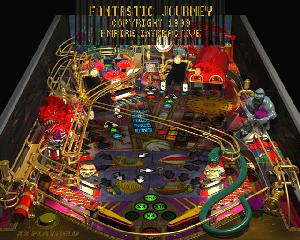Balls of Steel.
Remember pinball? Those glass covered, angled tables with the flashy lights and
sounds? Sure you do. Ever since I could remember, I wanted to own a few, just
like that kid in Silver Spoons. Pinball games in your living room and a
big toy train running through your house are the signs that you have truly arrived.
Well, times have changed.…
-
Good physics
-
Decent simulation
-
But it's still just a simulation
-
Doesn't take advantage of the medium
-
Slowdown when there are too many balls











